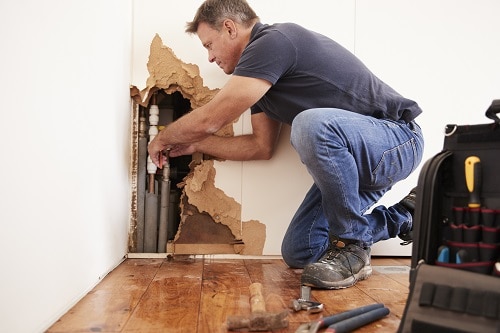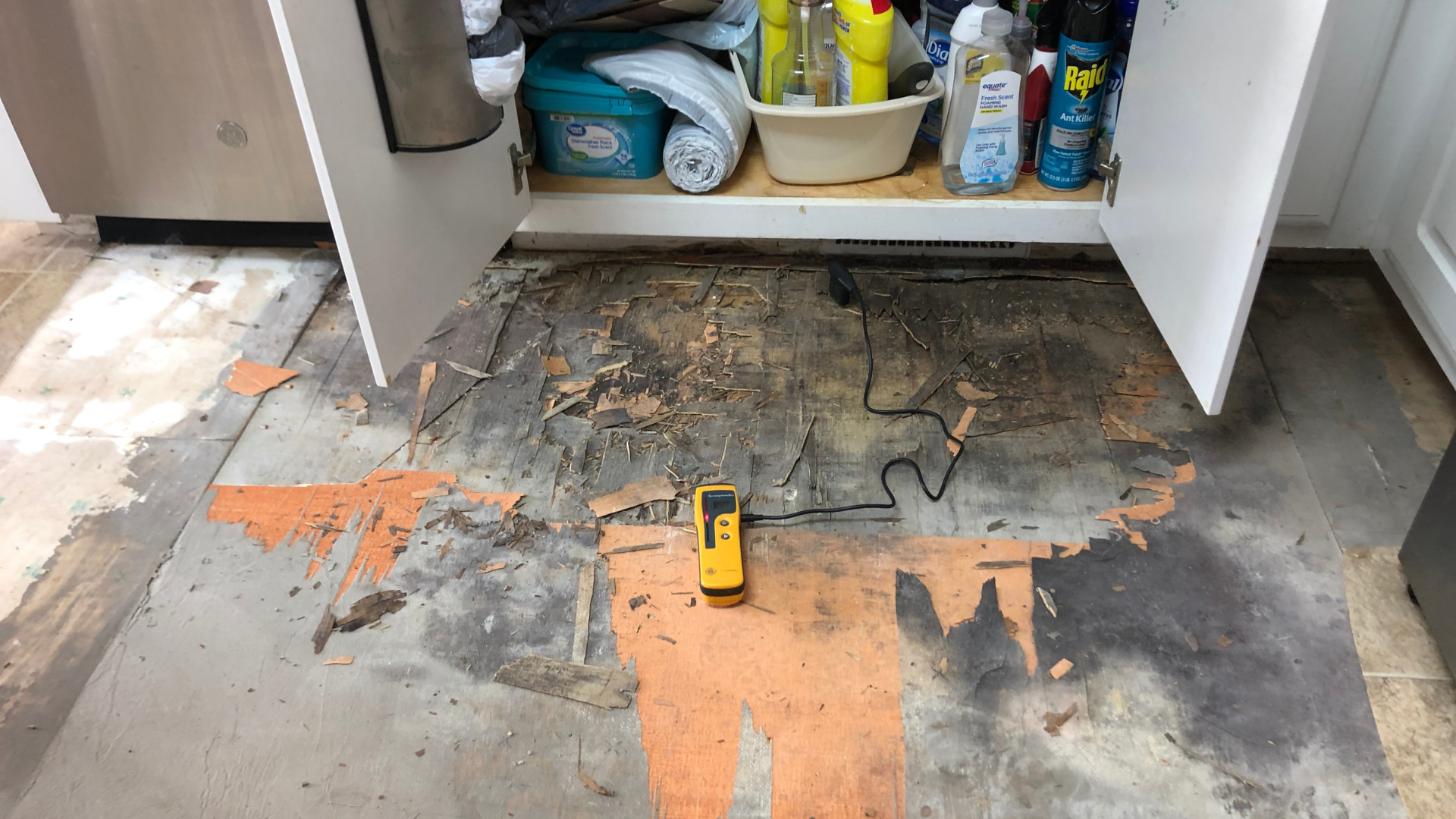A beginner’s guide to understanding Water Damage Restoration
Water Damage Restoration 101: Understanding the Process and Cost
Water damage can strike all of a sudden, leaving homeowners in a state of complication. Comprehending the repair process is crucial for efficient recuperation. From evaluating the damage to picking the ideal provider, each action influences the total end result and cost. Factors such as the sort of water damage and necessity likewise play a significant role. What are the details strategies utilized in repair, and exactly how can one get ready for prospective expenses?
Types of Water Damage

First Evaluation and Inspection

Water Removal Methods
Complying with the preliminary evaluation, reliable water extraction techniques are utilized to alleviate damage and stop further issues. These methods include the usage of customized equipment such as completely submersible pumps and industrial-grade vacuum cleaners - Water Extraction And Drying. The choice of technique relies on the volume of water present and the kind of materials impacted. For standing water, completely submersible pumps are usually utilized for quick elimination, while vacuums are optimal for drawing out water from carpets and furniture. Additionally, advanced techniques like water removal floor coverings may be used for hard-to-reach locations - Water Damage Restoration. The objective is to eliminate as much water as feasible, minimizing the possibility for mold development and structural damage. Motivate and reliable water extraction is necessary in the overall water damage repair procedure
Drying and Dehumidification Process
When the water extraction is full, the drying and dehumidification procedure comes to be crucial to bring back the damaged area. This stage generally uses industrial-grade dehumidifiers and air moving companies to properly decrease wetness degrees. The dehumidifiers attract wet air, eliminating excess moisture, while air moving companies circulate air to increase dissipation. Tracking tools is usually used to track humidity and temperature levels, making sure optimal drying out conditions. The period of this procedure can vary depending upon the degree of the water damage and ecological aspects. It is necessary to thoroughly dry all affected materials, consisting of wall surfaces, flooring, and home furnishings, to stop mold development and structural damage. Proper implementation of this step is essential for a successful reconstruction outcome.
Cleansing and Sanitizing Afflicted Locations
Once the drying process is total, a comprehensive preliminary assessment and evaluation of influenced areas is vital to determine contamination degrees. Efficient cleaning strategies and ideal items have to then be used to eliminate debris and spots. Sanitization and disinfection techniques are essential to assure that hazardous virus are removed, restoring the area to a risk-free problem.
First Evaluation and Inspection
Prior to starting any type of restoration initiatives, a thorough initial assessment and examination of the impacted areas are vital for efficient cleansing and sterilizing. This procedure entails determining the level of water damage, identifying the source of the water invasion, and reviewing the materials impacted. Examiners usually search for indications of mold and mildew development, structural stability problems, and harmed valuables. The assessment also includes checking wetness degrees using customized equipment to ensure no hidden water pockets stay, as these can lead to additional difficulties. Documenting the findings is essential for preparing the following actions in the repair process. An in-depth first assessment allows remediation specialists to develop a targeted strategy for effective cleansing and sanitizing, eventually reducing damage and wellness risks.
Cleansing Methods and Products
Efficient cleansing and sterilizing of water-damaged areas require a range of products and methods tailored to the specific products affected. For porous surfaces like drywall and carpets, extraction approaches are important to remove excess wetness, complied with by deep cleansing with specialized cleaning agents. Non-porous products such as read this article tile or metal can be cleaned utilizing commercial-grade cleansers that efficiently eliminate pollutants. Vapor cleansing is an additional reliable strategy, especially for carpetings and furniture, as it makes use of high temperatures to eliminate bacteria and mold (Flood Cleanup Services). Furthermore, eco-friendly products are progressively popular for their security and efficacy - Water Damage Restoration. Eventually, choosing the ideal cleaning techniques and products not just guarantees immediate tidiness but additionally aids in protecting against more damage and carcinogen associated with water breach
Sanitization and Disinfection Methods
When resolving water damage, proper sanitization and disinfection methods are vital to guarantee the safety and wellness of the damaged setting. After preliminary cleaning, surface areas have to be treated with suitable disinfectants to remove microorganisms, mold, and bacteria that prosper in damp conditions. Usual methods include the usage of EPA-approved chemical disinfectants, which can be used through spraying or cleaning techniques. Additionally, ultraviolet (UV) light systems can properly disinfect areas by reducing the effects of microorganisms without extreme chemicals. The choice of technique usually depends on the sort of materials affected and the level of contamination. Eventually, detailed sanitization not just restores a secure space however also helps stop future health dangers connected with sticking around moisture and mold and mildew growth.

Repair Work and Restoration Options
Assessing the damage brought on by water direct exposure is crucial for identifying the proper fixings and remediation choices. House owners might face various concerns, consisting of harmed drywall, warped flooring, and endangered structural aspects. Depending upon the degree of the damage, repairs may include replacing sections of drywall, installing brand-new floor covering, or reinforcing structural beams. In cases of extreme damage, full substitute of damaged products could be essential. Additionally, professional conservators frequently recommend utilizing wetness meters to examine concealed moisture levels prior to choosing the best program of action. It is important to act immediately to avoid mold development and further degeneration. Picking the appropriate alternatives not just restores the building yet also assures long-lasting safety and functionality.
Variables Affecting Restoration Prices

The level of water damage straight affects the restoration sets you back house owners can anticipate to incur. Elements such as the resource of the water, the period of direct exposure, and the afflicted products considerably influence prices. As an example, clean water damage from a busted pipeline is normally less expensive to recover contrasted to damage triggered by sewage. Furthermore, the degree of contamination dictates the need for specialized cleaning and disposal services, better increasing expenses. Geographic area likewise contributes, as regional labor prices and availability of restoration services can vary. The urgency of the reaction impacts expenses; quicker treatments generally lead to reduce total expenses by avoiding additional damage. Comprehending these elements is important for homeowners when estimating restoration expenses.
The 3 primary kinds of water damage are categorized based on contamination degrees: clean water, gray water, and black water. A thorough first evaluation and assessment are important actions in the water damage reconstruction process. For standing water, completely submersible pumps are normally made use of for quick removal, while vacuums are excellent for drawing out water from carpets and furniture. The degree of water damage directly impacts the restoration sets you back house owners can expect to sustain. Tidy water damage from a busted pipeline is generally much less costly to restore contrasted to damage created by sewer.